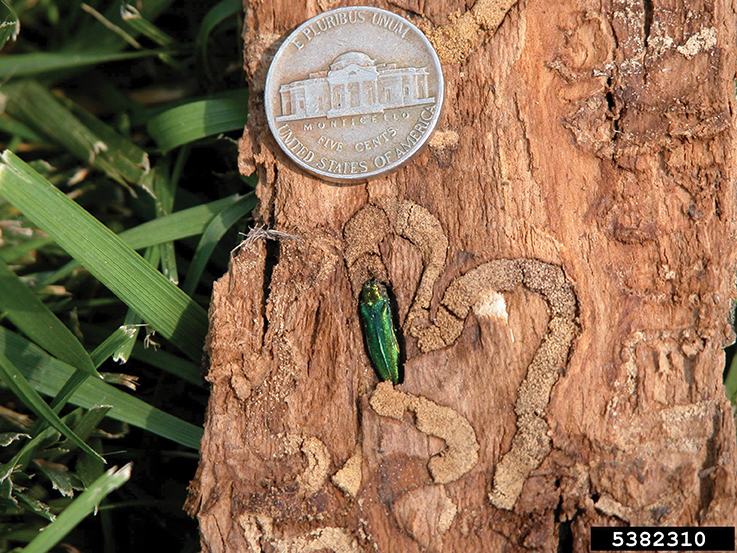Article contributed by the International Society of Arboriculture
Since first being discovered in Michigan and Ontario in 2002, the Emerald Ash Borer (EAB) has posed a threat to our trees (native Fraxinus spp.) in North America, the likes of which we have not seen since Dutch elm disease’s appearance 80 years ago.

The EAB is a small, emerald green insect native to Asia. Only about a half inch (1.3 cm) long in their adult stage, they lay their eggs in the bark of ash trees. When the larvae hatch, they bore meandering tunnels under the bark, consuming the cambium and phloem. Over time, these eventually girdle the tree. As a result of this, the canopy of the ash begins to die back, usually at the top, and one-third to one-half of the branches may die off in the first year. Watch for dieback with increased interior sprouting (epicormic growth) and an increase in woodpecker activity and damage to the trunk, as they forage for EAB. An ash tree may die as early as two years from the visible onset of EAB infestation.
In most U.S. climates, adult EAB begin to emerge from ash trees in May, peaking in late June. Keep an eye out for the D-shaped hole which their flat-headed bodies create as they bore their way through the bark. To see what EAB and its effects on ash trees look like, view the U.S. Forest Service’s photo album.
From Michigan and Ontario, EAB has spread to Ohio, Indiana, Illinois, Pennsylvania, Missouri, Wisconsin, Maryland, West Virginia, Virginia, Kentucky, New York and Minnesota. You can look up more specific maps of the EAB’s current range at emeraldashborer.info.

Preventive treatments vary, but all North American ash require constant pesticide protection in order to survive when EAB is present. Ideally, this will be done before the EAB arrives, because if the phloem has already been damaged, the chemical is not distributed effectively. Even one or two missed applications could allow EAB to kill the tree. If you are interested in a preventive treatment, read up on which treatment is best for you, which may include injections or sprays of the soil or trunk of systemic insecticides and protective cover sprays that are applied to the trunk, main branches and foliage.
The International Society of Arboriculture strives to keep its members and all ISA certified arborists up-to-date on all the latest advancements in the field of arboriculture. For more information on joining or becoming certified, visit www.isa-arbor.com today.
